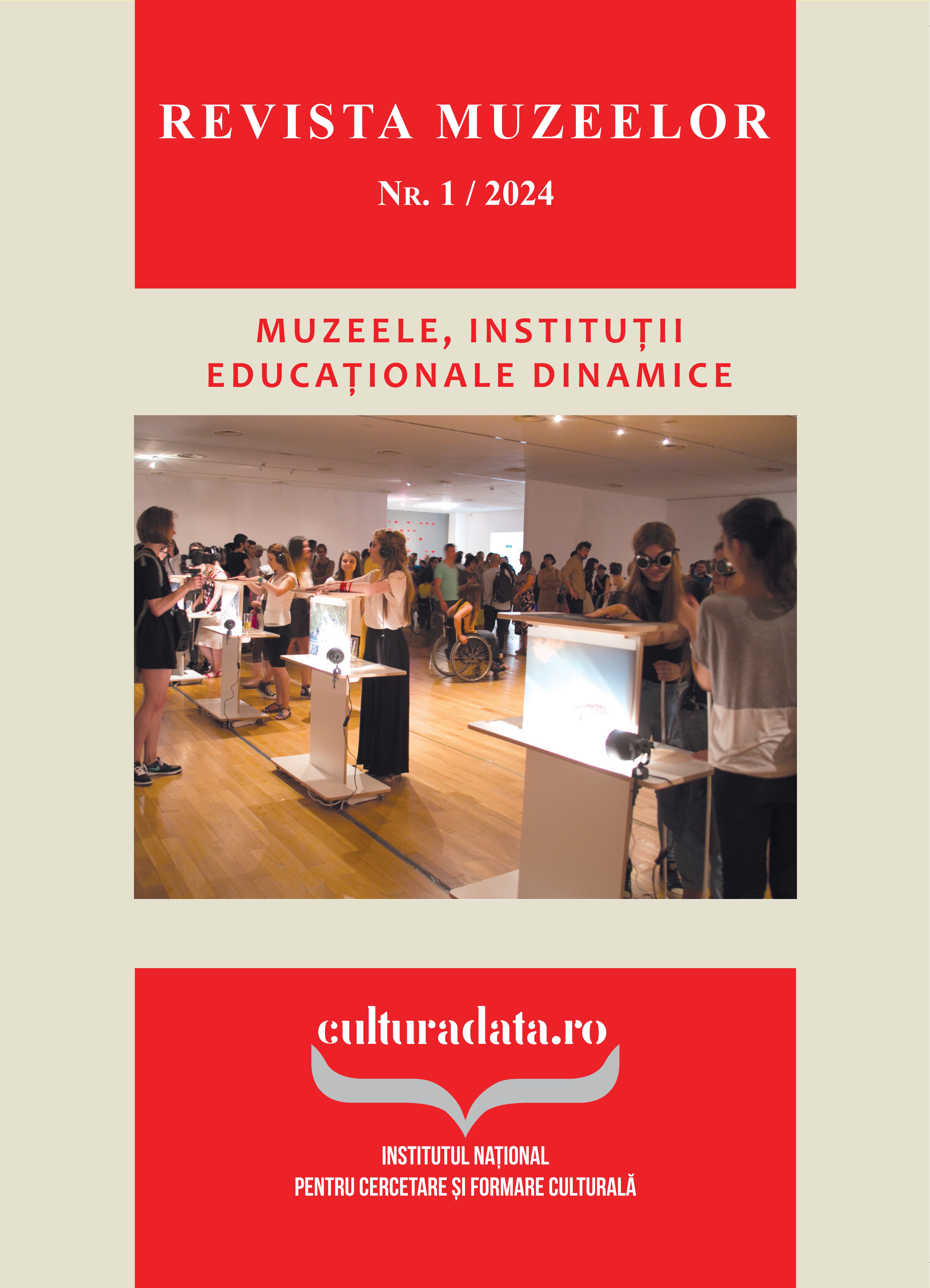Muzeul, un posibil vector formativ în domeniul industriilor creative. Studiu de caz: ROM(a)NOR Interferences
The Museum, a Possible Formative Vector in the Field of Creative Industries. Case Study. ROM(a)NOR Interferences
Author(s): Rareș Ioan Dina, Corina DinaSubject(s): Economy, Education, Museology & Heritage Studies, Preservation, Education and training, Sociology, Socio-Economic Research
Published by: Editura Universul Academic (SC GOOD LUCK SRL)
Keywords: museum education; traditional crafts; artisan skills; Roma minority; creative industries; cultural entrepreneurship
Summary/Abstract: In recent years, the connection between creativity, culture, innovation, and economic growth has become an essential focus of cultural policies in Romania and the European Union. The expectations and preferences of cultural consumers have evolved over the last 30 years, leading museums to adapt their strategies. It has become necessary for museums to diversify and expand their offers by emphasizing collective experiences, integrating participatory elements, highlighting educational roles, and preserving cultural identities. The „Dimitrie Gusti” National Village Museum has adopted this vision to become an influential educational entity promoting well-being. As part of this effort, the museum implemented the ROM(a)NOR Interferences project, supported by the EEA Grants 2014-2021 under the RO-Culture Program. This project aimed to promote and revitalize the cultural heritage of the Roma ethnic group through museology and social inclusion, with the goal of improving the situation of the Roma population. Among the project’s initiatives were seven training and initiation courses in creative industries and entrepreneurship, in which 140 Roma individuals participated. These courses included training in artisan skills such as metalworking, floristry, woodworking, weaving, jewelry making, and entrepreneurship.
Journal: Revista Muzeelor
- Issue Year: 1/2024
- Issue No: 1
- Page Range: 37-52
- Page Count: 16
- Language: Romanian

